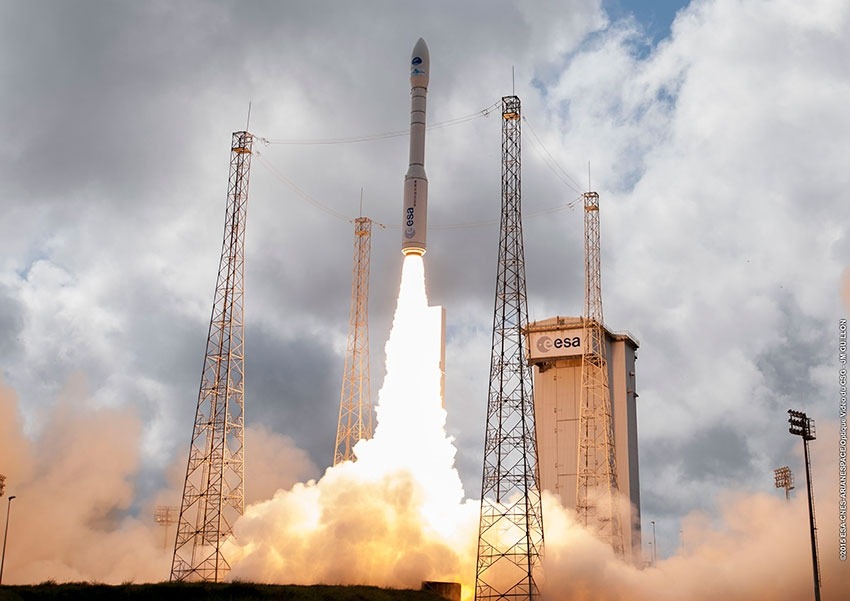The European launcher Vega took off last night (Paris time) from the European Space Centre in Kourou in French Guyana. It had two earth observation satellites for civil and military applications. At 10.58 p.m. In French Guiana, (2.58 a.m. BST August 2nd, 3.58 a.m in Paris, the European Space Launcher Vega took off from the Guiana Space Centre (GSC) in Kourou.
Vega has to send two earth observation satellites into orbit. These have been built in Tel Aviv by Israel Aerospace Industries (IAI). The satellites are the OPSTAT-3000 and Venµs (Vegetation and Environment monitoring on a New Micro Satellite). They will have civil and military applications for Italy, France and Israel.
A communiqué from Arianespace, the launching society indicates that OPTSAT -3000, with a mass weight of 368 kg has been built in response to “an earth observation programme for the Italian Ministry of Defence.”
The satellite has a lifespan of seven years enabling different entities of Italian national defence to acquire and use high resolution images from any point on the globe. Arianespace added, “Venµs is an earth exploration and observation mission by the Israeli Space Agency. The latter organisation falls within the Israeli Ministry for Science and Technology and the National Centre for Space Studies (known as the ‘CNES’)”.
Having a ground mass of 264 kg, the satellite may have two objectives: one is environmental by frequent overflying of sites of special scientific interest (SSSIs) and the other is technological.
During two and half years, the satellite will photograph, every two days, 110 selected sites across the globe to understand the development of vegetation but the impact of extreme events and climate change on natural ecosystems and agriculture. Then, Venµs will change its orbit and carry out a one-year test operation using electric propulsion.
Arianespace has indicated that Vega is producing “a service mission for earth observation for the seventh time.” The duration of the mission from taking off from the French Guiana Space Centre to the separation of the last satellite is around 1 hour and 40 minutes.
The Brussels Times

